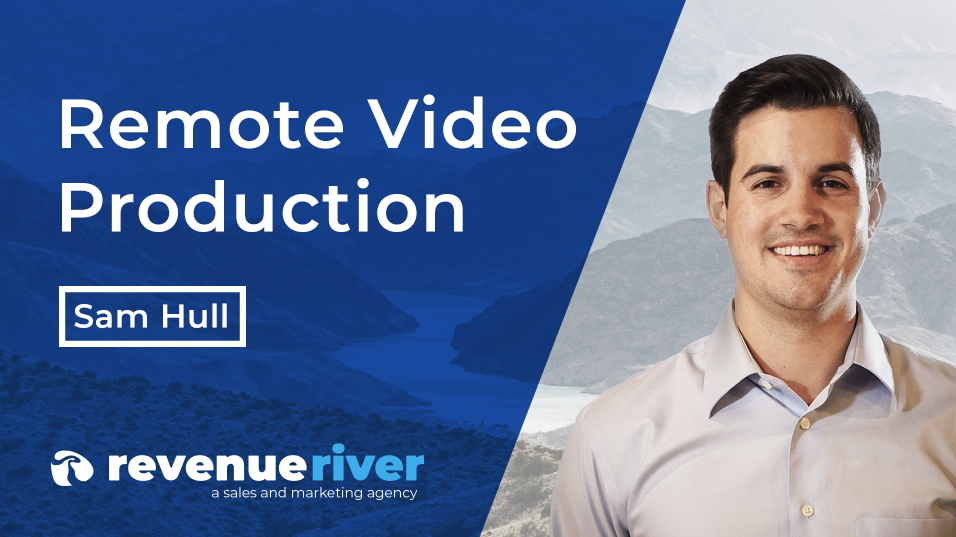

How can we keep making video during quarantine? How can we get the same quality? How can we continue our studio video series?
I've seen and heard these questions a lot over the last year and fortunately, the video production industry has been able to adapt and overcome the challenges of remote video production. This includes live production like your favorite network talk shows. A new normal has been established for the standards of video quality and production execution. We have seen a lot of videos recorded and live-streamed on webcams and with lower standards for video quality. Asynchronous video has become a common theme in communication practices to eliminate long video meetings and TLDR emails. With the emergence of these styles of video, this new normal has created even more opportunities for remote video production.

Best Practices for Remotes Production
The process for creating this type of content is fairly straight forward. You need to start with strategy. Understand the goal of the video or video series and what success looks like. From there, start to flesh out topics and talking points for your content. Do you need guests for a series? Start to reach out to your ideal guest and book time with them to produce the interview. Do you need to produce broll? Once you have the content plan in place for the video content, it's time to think about production design and set dressing. Since we are talking remote production this is greatly simplified. As organizations are adapting to this "New Normal," there is a need to choose a remote production tool. In many cases this leads to utilizing video meeting tools such as, Zoom, GoToMeeting, Microsoft teams, etc. All of these tools offer different benefits and at the end of the day it comes down to comfortability. What tool is your production team most comfortable working with and coaching the guest through? That being said, I recommend using a remote video tool like Vidyard or Loom to produce your content. No matter what production tools you have, it is important to do a practice session to work out any kinks before you go live.
That being said, there are 4 types of video content that I recommend you focus on for remote video production.
1. Episodic Content
Episodic content is a great way to keep your viewers engaged and anticipating more content from you. It is a very versatile form of video content that can help your viewer more easily digest long-form content. It can be used to communicate knowledge base content, topical content, or internal team content. One form of episodic content that works very well is an internal team interview series that allows your subject matter experts to display their expertise to a larger audience.
While forms of episodic content marketing include articles, infographics and podcasts, video tends to be the most popular and effective medium, and it’s not difficult to see why.
As far as the process goes, you need to, as always, start with strategy. Understand the goal of the video series and what success looks like. From there, start to flesh out topics and talking points for your first 5-6 episodes. Do you need guests? Start to reach out to your ideal guest and book time with them to produce the interview. From there, it's all about following the best practices for remote production.
2. User-Generated Content (UGC)
User-generated content gives your video content a more relatable voice. Your audience is more likely to be influenced by UGC video content than brand videos.
"When your company says, “Hey, look at how cool our product is,” the message may or may not be received, regardless of how cool your advertisement is. But when someone else says, “Wow, check out this cool thing I just found,” people are much more likely to listen."
Leverage champions within your audience and actioning that into UGC for your video marketing strategy can boost your video marketing success. UGC doesn't have to be strictly testimonials and word of mouth type messaging. I have seen success utilizing UGC to voice the problem vs amplifying the solution. Check out this example below.
The process of obtaining UGC can be tricky. You are relying on your customers and audience to produce content for you. It is important to be clear with expectations and timeline when you have someone that buys-in. Make it as simple as you possibly can and take all of the guesswork out of their execution. As with all remote production, I recommend a practice/test session to ensure your standards are met and expectations are clear.
3. Mixed Media Video
Mixed media content mixes elements of high level and dynamic graphics with live shot footage or stock footage. This style of video is a great way to produce a more elevated product remotely. This style of video works great for explainers, how-to videos, promotional videos, and brand hero videos. It allows you to utilize creative graphics and dynamic design without sacrificing the human element by utilizing engaging and relevant broll. Here is an example below.
When strategizing for this type of content it is important to consider the cost vs. result for shooting the live footage yourself or utilizing stock footage. Generally speaking, it can be more worth your time to gather stock footage that fits the messaging vs. planning, executing, and editing your own shoot. This is particularly relevant during the pandemic as remote production is necessary and our production capabilities are hindered.
4. Animated Content
Animated content can range from simple infographic-style animations to high-level 3d modeling with animation. No matter the style of animation, this is the type of content with the highest level of design and creativity with regard to remote production. Unlike the other types that I have mentioned above, there is little to no client or user involvement during the production of the visuals. Your only restriction is your editing team's abilities. Here is an example of a simple infographic-style animated video.
Don't hold back on your visual conceptualization for this type of video but keep the messaging for the voiceover simple and easy to digest. Too much detail in the verbiage matched with highly detailed visuals can be harder for your audience to engage with. This is particularly relevant when visualizing data for SaaS companies.
Restrictions on live production don't have to stop you from creating content in today's new normal. This is the time to innovate and use your resources to continue creating engaging and dynamic content. Focus on your messaging to speak directly to your audience's pain points and needs, simplify your strategy to make your life easier in production, and think outside the box to find new innovative ways to create content.
if you are looking to step up your game with video production or video marketing, we are here to help. Drop me a line at shull@revriv.com or schedule a consultation below and let's talk.
